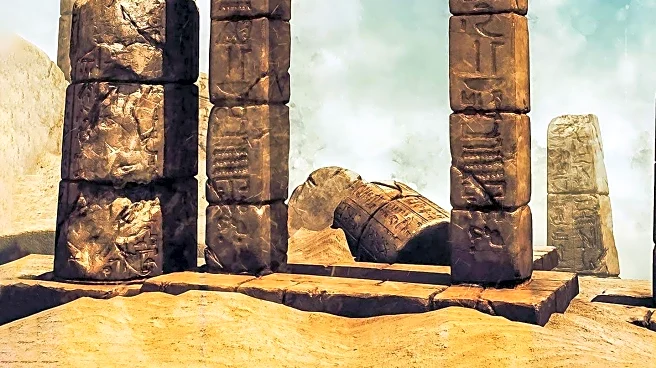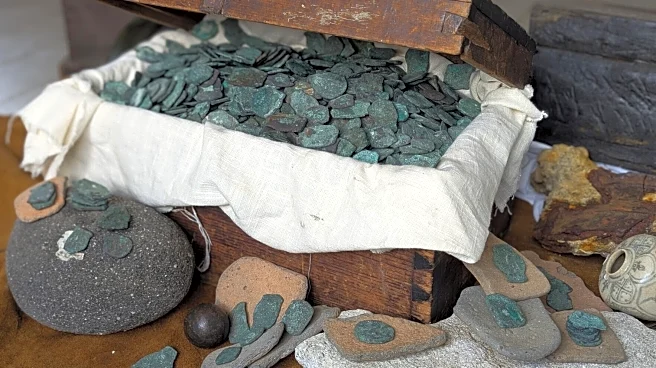What's Happening?
Scientists have uncovered a 675-year-old shoe in a vulture's nest in Spain, providing a unique glimpse into historical human life and ecological interactions. The shoe, remarkably preserved, was found in the nest of a bearded vulture, a species known for collecting various objects. Researchers believe that studying such nests can yield valuable information about past human activities and environmental conditions. The discovery highlights the role of vulture nests as repositories of historical artifacts, offering a window into the past that can inform current ecological and archaeological studies.
Why It's Important?
This discovery is significant as it underscores the potential of natural sites like vulture nests to serve as archives of human history. The preservation of the shoe suggests that similar artifacts could be found, providing insights into the materials and technologies used by people centuries ago. Such findings can enhance our understanding of historical human behavior, migration patterns, and interactions with the environment. Additionally, this research can contribute to conservation efforts by highlighting the ecological importance of vulture species and their habitats, which are often overlooked in historical studies.
What's Next?
Researchers plan to conduct further studies on vulture nests to uncover more artifacts and data that can shed light on historical human activities and ecological dynamics. This may involve interdisciplinary collaboration between archaeologists, ecologists, and historians to analyze the materials found and their implications. The findings could also prompt conservation initiatives aimed at protecting vulture habitats, recognizing their role in preserving historical artifacts. As more discoveries are made, they may influence public policy regarding the conservation of natural sites that hold historical significance.
Beyond the Headlines
The discovery of the shoe in a vulture's nest raises ethical questions about the preservation and study of artifacts found in natural habitats. It challenges researchers to balance the need for scientific inquiry with the protection of wildlife and their environments. Furthermore, it highlights the cultural dimensions of conservation, as understanding the historical significance of such findings can foster greater appreciation for biodiversity and the interconnectedness of human and ecological histories.













